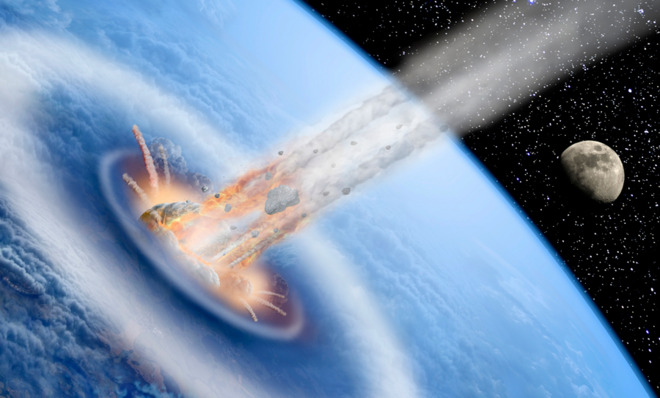Massive asteroid may have kickstarted the movement of continents
A few pebbles can tell us a lot


Earth was still a violent place shortly after life began, with regular impactors arriving from space. For the first time, scientists have modeled the effects of one such violent event — the strike of a giant asteroid. The effects were so catastrophic that, along with the large earthquakes and tsunamis it created, this asteroid may have also set continents into motion.
The asteroid to blame for this event would have been at least 37km in diameter, which is roughly four times the size of the asteroid that is alleged to have caused the death of dinosaurs. It would have hit the surface of the Earth at the speed of about 72,000kmph and created a 500km-wide crater.
At the time of the event, about 3.26 billion years ago, such an impact would have caused 10.8 magnitude earthquakes — roughly 100 times the size of the 2011 Japanese earthquake, which is among the biggest in recent history. The impact would have thrown vaporized rock into the atmosphere, which would have encircled the globe before condensing and falling back to the surface. During the debris re-entry, the temperature of the atmosphere would have increased and the heat wave would have caused the upper oceans to boil.
The Week
Escape your echo chamber. Get the facts behind the news, plus analysis from multiple perspectives.

Sign up for The Week's Free Newsletters
From our morning news briefing to a weekly Good News Newsletter, get the best of The Week delivered directly to your inbox.
From our morning news briefing to a weekly Good News Newsletter, get the best of The Week delivered directly to your inbox.
Donald Lowe and Norman Sleep at Stanford University, who published their research in the journal Geochemistry, Geophysics, Geosystems, were able to say all this based on tiny, spherical rocks found in the Barberton greenstone belt in South Africa. These rocks are the only remnants of the cataclysmic event.
According to Simon Redfern at the University of Cambridge, there are two reasons why Lowe and Sleep were able to find these rocks. First, the Barberton greenstone belt is located on a craton, which is the oldest and most stable part of the crust. Second, at the time of the event, this area was at the bottom of the ocean with ongoing volcanic activity. The tiny rocks, after having been thrown into the atmosphere, cooling, and falling to the bottom of the ocean, then ended up trapped in the fractures created by volcanic activity.
This impact may have been among the last few major impacts from the Late Heavy Bombardment period between three and four billion years ago. The evidence of most of these impacts has been lost because of erosion and the movement of the Earth's crust, which recycles the surface over geological time.
However, despite providing such rich details about the impact, Lowe and Sleep are not able to pinpoint the location of the impact. It would be within thousands of kilometers of the Barberton greenstone system, but that is about all they can say. The exact location may not be that important, Lowe argued: "With this study, we are trying to understand the forces that shaped our planet early in its evolution and the environments in which life evolved."
A free daily email with the biggest news stories of the day – and the best features from TheWeek.com
One of the most intriguing suggestions the authors make is that this three-billion-year-old impact may have initiated the the movement of tectonic plates, which created the continents that we observe on the planet.
The continents ride on plates that make up Earth's thin crust; the crust sits on top of the mantle, which is above a core of liquid iron and nickel. The heat trapped in the mantle creates convection, which pushes against the overlying plates.
All the rocky planets in our solar system — Mercury, Venus, Earth, and Mars — have the same internal structure. But only Earth's crust shows signs of plate motion.
A possible reason why Earth has moving plates may be to do with the heat trapped in the mantle. Other planets may not have as much heat trapped when they formed, which means the convection may not be strong enough to move the plates.
However, according to Redfern: "Even with a hot mantle you would need something to destabilize the crust." And it is possible that an asteroid impact of this magnitude could have achieved that.
More from The Conversation...
-
 The great global copper swindle
The great global copper swindleUnder the Radar Rising prices and easy access makes the metal a ‘more attractive target for criminals looking for a quick profit’
-
 ‘They’re nervous about playing the game’
‘They’re nervous about playing the game’Instant Opinion Opinion, comment and editorials of the day
-
 Will Netanyahu get a pardon?
Will Netanyahu get a pardon?Today's Big Question Opponents say yes, if he steps down